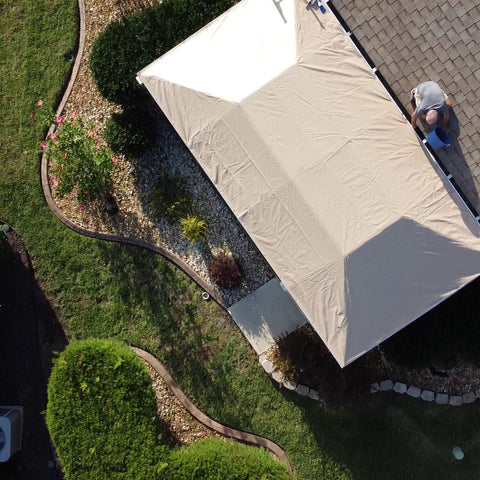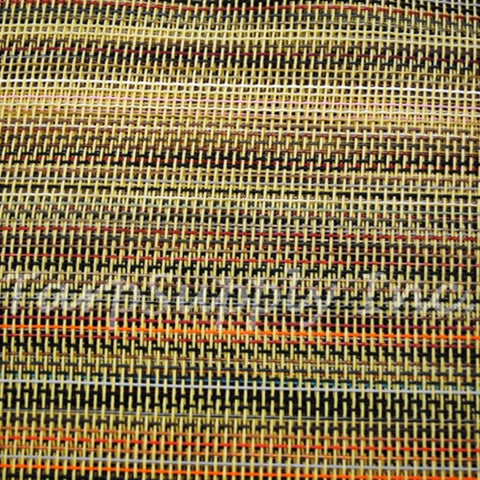Selecting the perfect awning tarp for your outdoor space is essential for maximizing both functionality and aesthetics. Whether you’re looking to create a shaded area, protect against the elements, or enhance your outdoor living environment, understanding the different types of awning tarps and their materials will help you make an informed decision. This comprehensive guide will explore various awning tarp options, their advantages, and how to choose the best one to suit your needs.
Types of Awning Tarps

Choosing the right awning tarp involves understanding the various types available. Each type offers unique benefits and is suited to different applications.
1. Retractable Awning Tarps
Retractable awning tarps are a versatile choice for those who want flexibility. These tarps can be extended or retracted based on weather conditions or personal preference. They are ideal for spaces where you need adjustable coverage, such as patios or decks.
Advantages:
- Adjustable coverage: Can be extended or retracted as needed.
- Convenient: Easily operated manually or electronically.
- Space-saving: Stows away when not in use.
Best For: Areas where adjustable shade or weather protection is required, such as patios or outdoor dining areas.
2. Fixed Awning Tarps
Fixed awning tarps are permanently installed and offer consistent coverage. They are mounted on a fixed frame, providing reliable protection from sun, rain, and wind.
Advantages:
- Stable: Provides consistent protection without the need for adjustment.
- Durable: Often made from heavy-duty materials.
- Low maintenance: No moving parts to maintain.
Best For: Permanent installations where consistent protection is needed, such as over doors or windows.
3. Portable Awning Tarps
Portable awning tarps are lightweight and designed for easy setup and takedown. They are ideal for camping, picnics, or temporary outdoor events.
Advantages:
- Versatile: Can be used in various locations.
- Easy to transport: Lightweight and compact.
- Quick setup: Can be assembled and disassembled quickly.
Best For: Temporary use at outdoor events, camping trips, or recreational activities.
4. Custom Awning Tarps
Custom awning tarps are tailored to your specific needs and dimensions. This option is ideal if you have unique requirements or non-standard dimensions.
Advantages:
- Perfect fit: Tailored to your exact specifications.
- Personalized features: Can include custom colors, logos, or additional features.
- Optimal coverage: Ensures the tarp covers the intended area precisely.
Best For: Unique or non-standard installations, or if specific features are needed.
Materials for Awning Tarps

The material of your awning tarp plays a crucial role in its performance and longevity. Here are the most common materials used for awning tarps:
1. Polyethylene (Poly) Tarps

Polyethylene tarps are popular for their affordability and versatility. Made from woven plastic fibers, these tarps are lightweight yet durable. They are often coated to resist UV rays and water.
Advantages:
- Cost-effective: Generally more affordable than other materials.
- Waterproof: Provides protection against rain.
- UV-resistant: Prevents sun damage.
Best For: Budget-conscious projects requiring waterproof and UV-resistant properties.
2. Vinyl Tarps

Vinyl tarps are known for their heavy-duty durability and excellent resistance to various weather conditions. They are made from thick vinyl-coated polyester, making them suitable for demanding environments.
Advantages:
- High durability: Resistant to tears and abrasions.
- Waterproof: Offers superior water resistance.
- Temperature control: Provides better insulation.
Best For: Areas with extreme weather conditions or high usage.
3. Canvas Tarps

Canvas tarps are made from woven cotton and are often treated to be water-resistant. They offer breathability and are suitable for moderate weather conditions.
Advantages:
- Breathable: Reduces condensation and moisture buildup.
- Eco-friendly: Made from natural materials.
- Durability: Strong and tear-resistant.
Best For: Moderate weather protection and eco-conscious projects.
4. Mesh Tarps

Mesh tarps are designed to allow air and light to pass through while providing some level of shading and protection. They are not waterproof but are useful for wind and light filtration.
Advantages:
- Breathable: Allows for air circulation.
- Light filtration: Provides shade while allowing light to penetrate.
- Wind protection: Reduces the impact of strong winds.
Best For: Areas requiring wind protection and partial shading.
Factors to Consider When Choosing an Awning Tarp

Selecting the right awning tarp involves considering several factors to ensure it meets your specific needs. Here are key aspects to evaluate:
1. Purpose and Functionality
Determine the primary purpose of the awning tarp. Are you looking for sun protection, rain coverage, or both? Consider whether you need a fixed, retractable, or portable option based on how you plan to use it.
2. Climate and Weather Conditions
The climate and weather conditions in your area will influence the choice of material and type. For example, areas with heavy rainfall or intense sun exposure may require more durable materials like vinyl or poly.
3. Size and Coverage
Measure the area you need to cover accurately. Ensure the tarp you choose provides sufficient coverage and fits the dimensions of your space. Custom tarps can be tailored to specific sizes for a perfect fit.
4. Installation and Maintenance
Consider how the awning tarp will be installed and maintained. Fixed tarps may require professional installation, while portable options can be set up by yourself. Maintenance needs also vary by material, with some requiring regular cleaning or inspections.
5. Budget
Budget constraints will influence your choice of material and type. While some materials are more affordable, others offer higher durability and longer-term value. Balance your budget with the desired features and benefits.
Conclusion
Choosing the right awning tarp for your outdoor space involves understanding the different types and materials available, as well as considering your specific needs and conditions. By evaluating factors such as purpose, climate, size, and budget, you can select a tarp that provides optimal protection and enhances your outdoor environment. Whether you opt for a retractable, fixed, portable, or custom tarp, ensuring the right choice will contribute to the functionality and longevity of your outdoor space.





